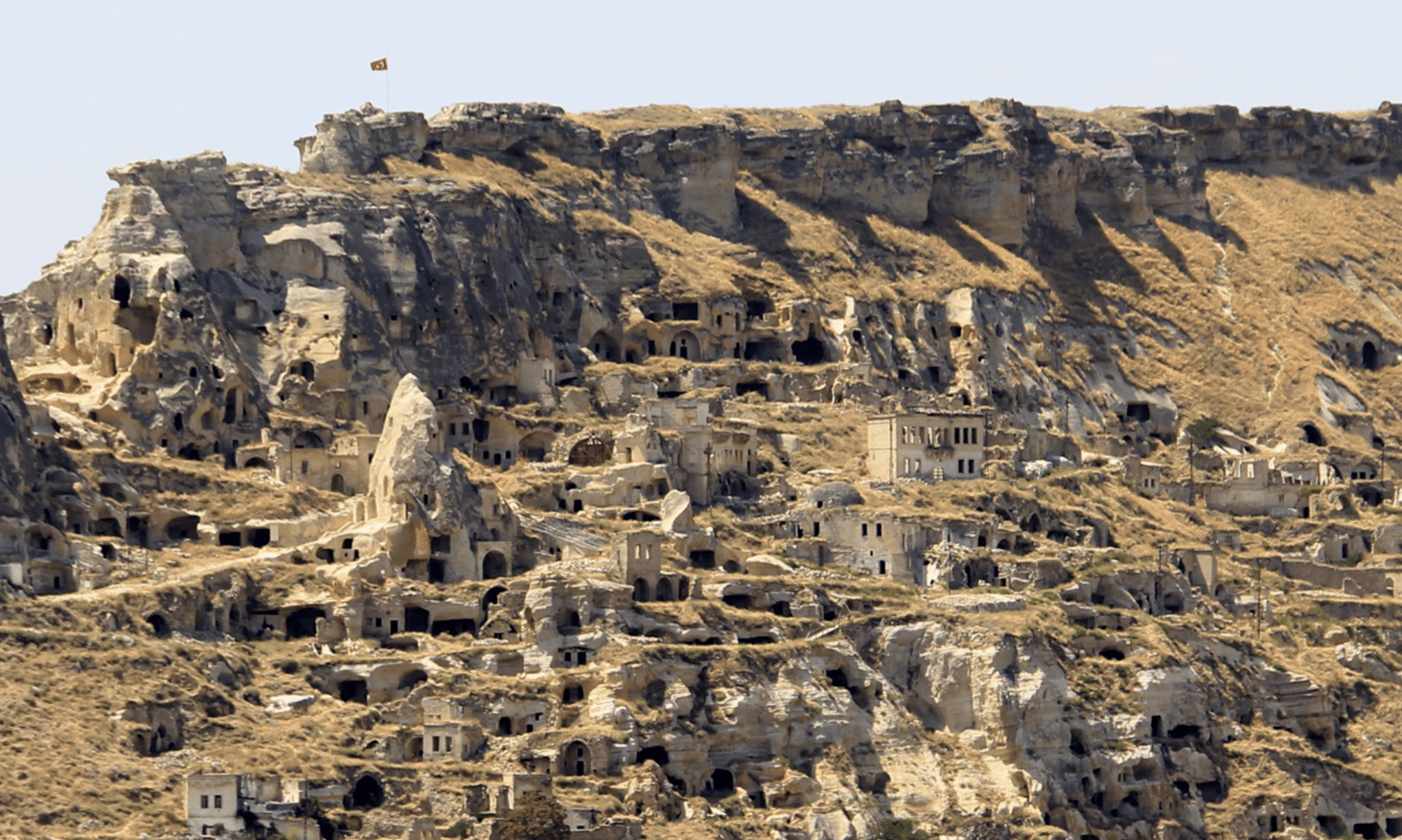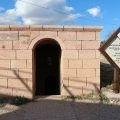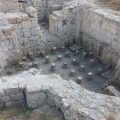Kayakapi Neighborhood is a historical area located on the northeastern slope of a hill known as Esbelli. The region is characterized by a semi-mountainous landscape and volcanic tuff, pumice, and basalt rocks. This unique landscape has resulted in the fairy chimneys and rock-carved houses that are prevalent in the area.
The natural environment of Ürgüp and its surroundings consists of steppe plants, as well as orchards and vineyards. A few forest areas are observed, except for the remains of older oak trees in the mountains. The most prominent river in the province is Kızılırmak (Halys), with secondary rivers flowing down from Hodul Mountain and joining it.
The cultural environment of Kayakapi Neighborhood is rich and diverse, with a history that dates back to the Hittite period from 1800-1200 BC. The region is renowned for its rock-carved shelters made by early Christians fleeing the wave of iconoclasm that spread in the Byzantine Empire. The area is believed to have been used as a missionary center, starting from the 1st-2nd centuries AD, leading to the construction of many churches and monasteries in Ürgüp-Göreme, which is now a Historical National Park, and in neighboring areas.
Nevşehir, Ihlara, and Soğanlı are the three valleys where this kind of life was prevalent. Among the nearly 200 underground cities in Cappadocia, 45 of them are in Nevşehir Province. An important find dating from the late Roman-early Byzantine period is a very large floor mosaic and building complex, the first of its kind in the region, which was uncovered by the Nevşehir Museum officials in Şahin Efendi (Söviş) village, near Soğanlı Valley, in early 2002.
From later periods, Rükneddin Kılıç Aslan and Altıkapılı Mausoleums (Türbe) should be mentioned. One of the important Islamic monuments in this region is the Taşkınpaşa Complex (Külliye) in Damsa Village, which is known to have existed since the Karamanoğlu Principality.
It is noteworthy that in the 19th century, Cappadocian settlements such as Mustafapaşa (Sinasos), Derinkuyu (Malekopia), and Ürgüp hosted concentrated populations of the Anatolian Greek citizens of the Ottoman Empire. As testimony to this, many churches are seen in the region today.
The settlement of Ürgüp, or St. Prokopios, its oldest known name, was founded as a little town with cave houses carved into steep rocks on the valley of Tomisos (today Damsa) stream. The main historical spot is the rock formation also known as Esbelli, the center of settlement in Ürgüp. It is surrounded by dwellings and ruins of other buildings carved into the land or made with local stones, part of which forms Kayakapi Neighborhood.
Kayakapi Neighborhood itself features many examples of vernacular and monumental architecture, including the House of Saint John the Russian (Yuhannes). Abandoned after the 1980s, the semi-ruins and natural landscape of Kayakapi are now being developed for tourism.
In addition to its rich cultural and natural heritage, Kayakapi Neighborhood also offers visitors a range of activities and amenities. These include hot air balloon rides, horseback riding, hiking, and traditional Turkish baths.




